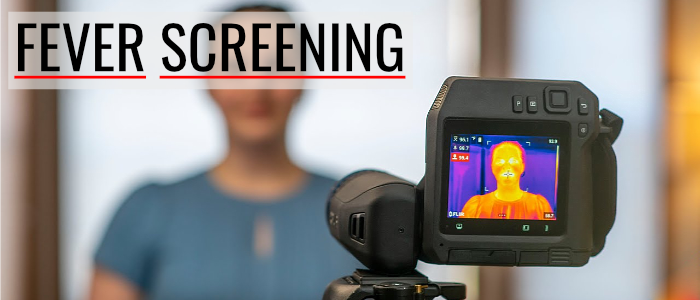
On the 11th March 2020, The World Health Organisation (WHO), responsible for assessing the global developments of COVID-19, characterised the outbreak as a pandemic¹. As of 31st March 2020, it is reported that the pandemic has affected more than 179 countries, with more than 823,000 cases confirmed worldwide².
WHO confidently write that ‘all countries can still change the course of this pandemic’, and in order to supress and control the virus, it advises that countries should take measures to ‘detect, test, treat, isolate, trace and mobilise their people in the response’³ to the global emergency.
With thermal imaging technology reliably able to display subtle differences in body temperature, it is no surprise that products of this nature are being deployed globally to aid the front-line in the fight against COVID-19. So much so, manufacturers have been forced to step up production in order to meet the global demand.
So how can thermal imaging help in the fight? Although thermal imaging products should never be used to make a diagnosis of a disease such as COVID-19, they are vital in screening those with a higher body temperature so that they can be medically assessed. Although a standard contact thermometer can provide the same information, it is very important to understand the benefits of screening using a thermal imager, especially in the current outbreak where body-to-body contact is to be avoided:
- Non-contact screening measurements that comply with social distancing protocol
- Rapid temperature measurements, some systems capable of screening up to 2,400 people per hour
- Fast and clear go/no go alarm indications
- Accurate body temperature measurements
- Ease of use
And how do they work? This depends on the individual system being used. Some products are designed to be handheld in order to obtain a temperature reading of a subject, whereas other products are designed to be mounted on tripods for remote assessment. More advanced systems can even remotely screen multiple people simultaneously – however in all cases, the principle of temperature measurement using an infrared thermometer, or a thermal imaging camera is the same; and this is based on the principle of emissivity.
Without going into to emissivity in depth, it’s useful to know about this principle in so that we can understand how a thermal camera works in screening body temperature. In very simple terms, emissivity is the measure of how effective a material emits thermal radiation, on a scale of 0 to 1. A reflective object such as aluminium foil has a very low emissivity value (around 0.03), whereas human skin has a higher emissivity value (around 0.97). An infrared thermometer or thermal camera can measure the thermal radiation being emitted from an object, ultimately providing a temperature reading, a thermal image, or both.
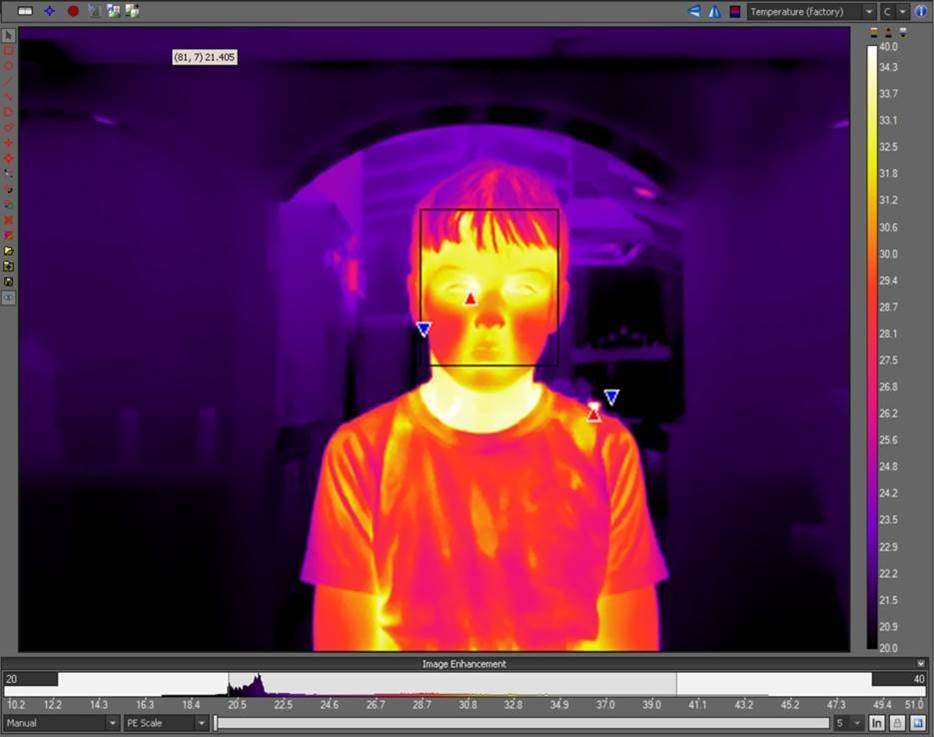
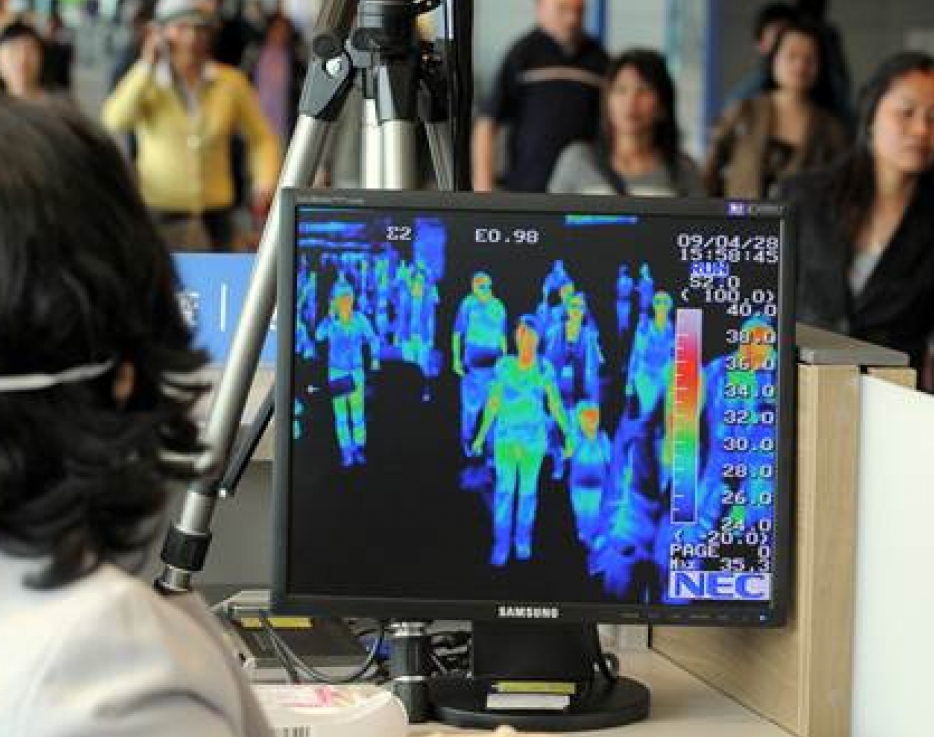
What products are available to help screen those who may be suffering a higher body temperature? Test Meter Group has established close working relationships with thermal imaging manufacturers such as FLIR, Testo, Seek Thermal, Fotric and Extech Instruments over the last 15 years. These relationships allow us to bring the latest thermal imaging technology to market in the UK and in some cases, further afield. With the current epidemic in mind, we are playing a vital part in supplying equipment suitable for quickly screening individuals to more advanced systems developed for simultaneously screening multiple people.
Non-contact Infrared Thermometers
Products such as the Extech IR200 and the TM300 non-contact IR forehead thermometers are effective tools for screening those at home or in the work environment but likewise they are also currently being distributed and stock prioritised for medical and key workers in the frontline.
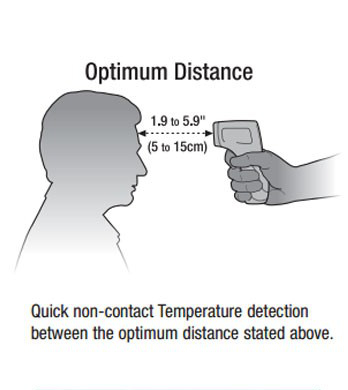
Non-contact Infrared thermometers are easy to use, with ‘Hi/Lo’ indications on the screen to determine whether the body temperature being screened is too high or too low. However, it is important to note that these thermometers should ideally only be used inside within the ambient conditions specified within the respective user manuals. The user must also be mindful of social distancing guidelines when screening others with a non-contact IR thermometer.
- Low cost
- Easy to use
- Clear indication of temperature
Cons:
- Indoor use preferably, within specific conditions for accurate measurement
- No visual thermal image
- Not able to remotely screen, potentially exposing the user to infection
Handheld Thermal Imaging Cameras
Thermal imaging cameras provide more accurate screening measures than a non-contact infrared thermometer, whilst also providing a clear thermal image of the subject being screened. The two most important factors to consider when choosing any thermal camera are its resolution, and its thermal sensitivity. The thermal resolution depicts how ‘clear’ a thermal image will be as this ultimately dictates how many thermal detectors the camera has. For example, a 160x120 model has a sum of 19,200 detectors; a higher resolution camera, for example, a 320x240 model has a sum of 76,800 detectors. The second factor to consider is the thermal sensitivity, or how small a temperature difference that the camera can detect. For example, a camera with a thermal sensitivity of 100mk will only identify changes as low as 0.1 Celsius, whereas a camera with a thermal sensitivity of 50mk would be able to identify temperature differences as small as 0.05 Celsius.
When choosing a handheld thermal imaging camera specifically for fever screening, it is important to choose a model that offers a high enough resolution whilst also being as thermally sensitive as possible. FLIR’s handheld range suitable for fever screening (E53, E75, E85 and E95) start with a resolution of 240x180 (43,200 detectors) and a thermal sensitivity starting from 30mk (0.03 Celsius). These models now include ‘Excess Body Temperature’, or ‘EBT’ Mode that automatically identifies those showing symptoms of fever using a carefully developed, accurate algorithm that has full US FDA approval.
Other cameras, such as Testo’s 872 boast a ‘Super Resolution’ feature that doubles the native 320x240 resolution to a huge 640x480 (307,200 detectors), whilst offering a thermal sensitivity of 60mk, 0.06 Celsius. Whilst not offering ‘EBT’ mode like the FLIR models, it is possible for the user to programme the camera so that temperatures above and below a certain range are displayed in a different colour – a simple but effective way of screening subjects with abnormal body temperatures. All thermal cameras are also suitable for use in low light and night-time conditions, too.
Pros:
- Easy to use
- Clear thermal images
- Very clear indications of body temperature
- Can use in low light/night-time conditions
Cons:
- Some models may require familiarity of the principles of thermography in order to ensure the camera is set correctly for fever screening
- Slow screening method
- Some models can be expensive
- No tripod mount for remote screening, potentially exposing the user to infection
Tripod Mounted Thermal Imaging Cameras – Remote Screening
Using a tripod mounted thermal imaging camera for fever screening allows the user to distance themselves from potential sources of infection. A set up would typically include a thermal imaging camera mounted upon a tripod, with a video output feeding a remote monitor that is situated at a safe distance from those being screened. These systems are perfect for deployment in the office, supermarkets, low foot-traffic public transport terminals and even for medical centre/hospital entry.
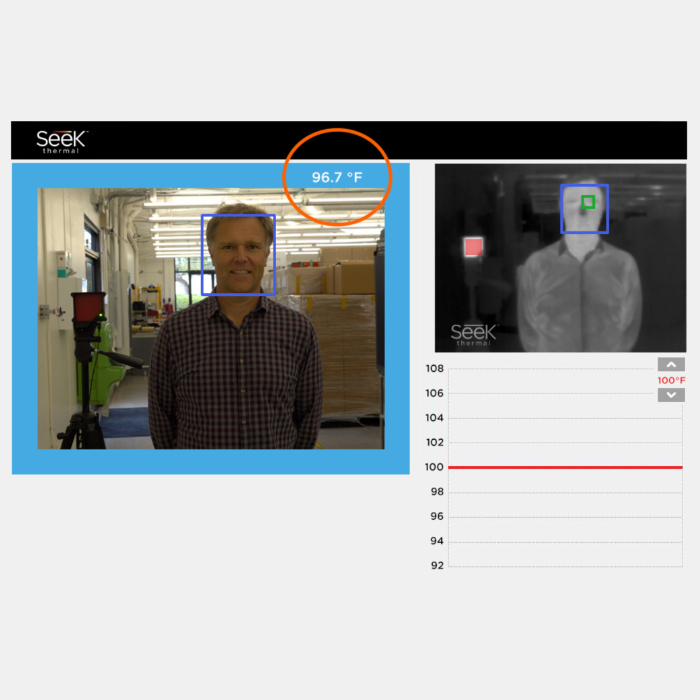
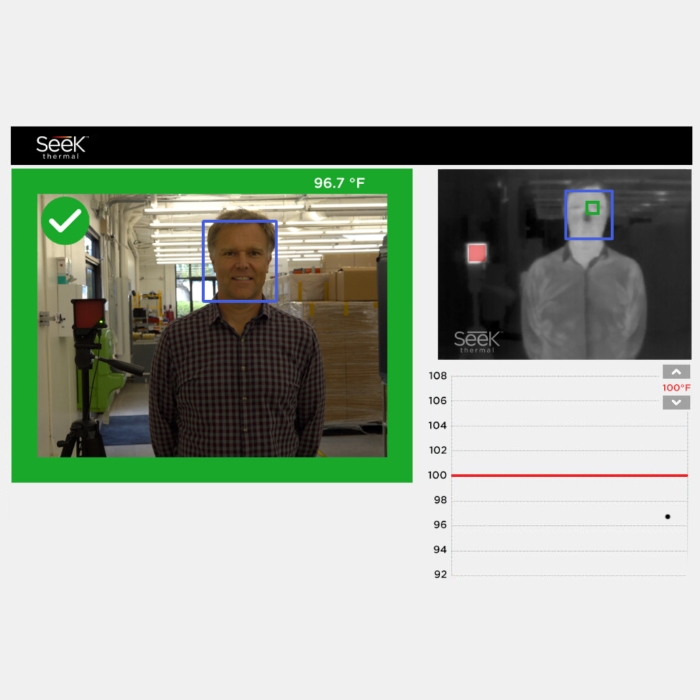
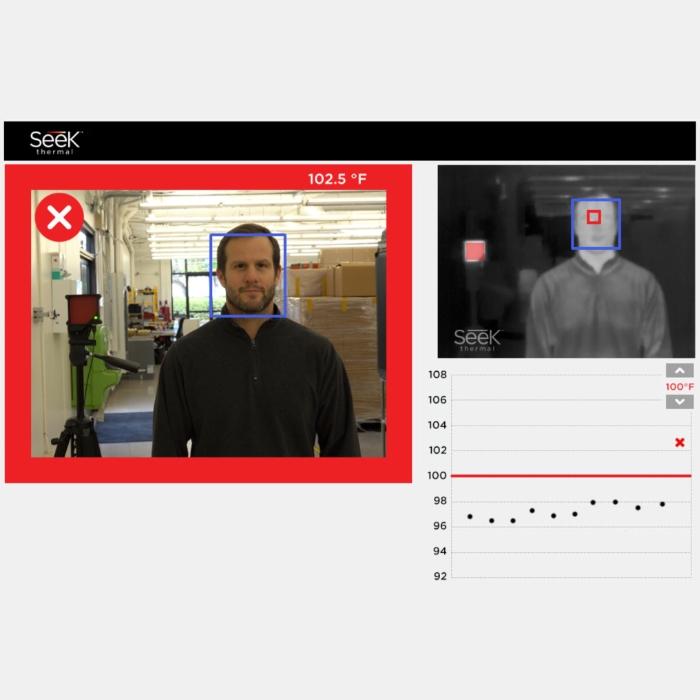
Whereas FLIR’s tripod mounted thermal imaging cameras (T530, T540, T840, T860) utilise the US FDA approved EBT system mentioned previously, Seek Thermal also have a brilliant out-of-the-box solution in the Seek Scan product. The Seek Scan System is designed for providing very accurate skin temperature measurements whilst also complying with social distancing protocols. Although, the main benefit lies in how easy their system is to set-up and use; Seek Thermal state that the system can be up and running within minutes with little to no training required in operation.
Whereas the EBT algorithm installed within FLIR’s firmware allow for very accurate body temperature measurements, the simplistic solution within Seek Thermal’s product is to include a fixed heat source within the kit (this would stand next to the subject being screened), thus enabling the Seek Scan to produce much higher accuracy screenings than a standard thermal imaging camera. Arguably, this simple but effective approach negates the time spent in developing an expensive algorithm, and hence the Seek Thermal Seek Scan is offered at a comparatively low cost for a system of this calibre.
Pros:
- Remote screening, the user is safe from exposure to infection
- Very clear safe/not safe indication
- Some systems extremely easy to use with little to no training required
- Very clear indications of body temperature
- Can use in low light/night-time conditions
Cons:
- Some models may require familiarity of the principles of thermography in order to ensure the camera is set correctly for fever screening
- Fairly slow screening time – one person in, one person out
- Some models can be expensive
Tripod Mounted Thermal Imaging Cameras – Rapid Remote Screening
Where typical remote screening systems require individuals to stop walking and to stand stationary in front of the screening system for analysis, the Fotric F226B Fever Screening System enables accurate screening without breaking the flow of foot traffic. This makes it the perfect solution for detecting abnormal body temperatures in high foot-flow locations such as airport terminals, hospitals, schools, government agencies and factories.
Essentially, the Fotric F226B utilises the same set up as the FLIR tripod mounted thermal cameras, that is, a thermal imager mounted upon a tripod with a video output signal feeding a remote monitor located a safe distance from those being screened. However, the difference comes in how the F226B conducts its screening.

In a typical two-channel screening situation the 226B can scan up to two people every 3 seconds, averaging roughly 40 bodies a minute and 2,400 an hour. If the typical walking speed through the channels is increased slightly, the scanner can analyse an incredible 3,600 people per hour. Whereas other screening systems must scan one subject at a time, the Fotric 226B's ability to scan two faces simultaneously without pause or image freezing reduces the time taken to carry screening, whilst keeping queues to a minimum.
Pros:
- Remote screening, the user is safe from exposure to infection
- Very quick screening method
- Very clear safe/not safe indication
- Extremely easy to use with little to no training required
- Very clear indications of body temperature
- Can use in low light/night-time conditions
Whatever your requirement may be for fever screening in these trying times, Test Meter Group are here to help. We are successfully operating remotely where possible, whilst complying with the latest government guidelines within our premises.
Our staff are L1 qualified ITC thermographers with nearly 50 years of collective experience within the field and can offer their guidance in a system to suit your environment, please don’t hesitate to call our sales team on 0113 248 99 66 (option 1), or email your enquiry to us on sales@test-meter.co.uk
1 WHO Director-General's opening remarks at the media briefing on COVID-19 - 11 March 2020
2 Coronavirus: A visual guide to the pandemic
3 WHO Director-General's opening remarks at the media briefing on COVID-19 - 11 March 2020
